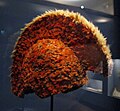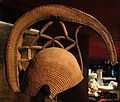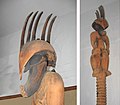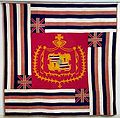
The Hawaiian archipelago consists of 137 islands in the Pacific Ocean that are far from any other land. Polynesians arrived there one to two thousand years ago, and in 1778 Captain James Cook and his crew became the first Europeans to visit Hawaii (which they called the Sandwich Islands). The art created in these islands may be divided into art existing prior to Cook’s arrival; art produced by recently arrived westerners; and art produced by Hawaiians incorporating western materials and ideas. Public collections of Hawaiian art may be found at the Honolulu Museum of Art, the Bishop Museum (Honolulu), the Hawaii State Art Museum and the University of Göttingen in Germany.
Contents
- Art prior to Cook's arrival
- List of native Hawaiian artists in the traditional arts
- Art produced by visitors
- List of artists that visited Hawaii
- Art produced by Hawaiians and long-term residents
- List of Hawaiian artists, and artists that lived in Hawaii long-term
- Selected works of native Hawaiian art
- References
- External links
In 1967, Hawaii became the first state in the nation to implement a Percent for Art law. The Art in State Buildings Law established the Art in Public Places Program and designated one percent of the construction costs of new public schools and state buildings for the acquisition of works of art, either by commission or by purchase.





















